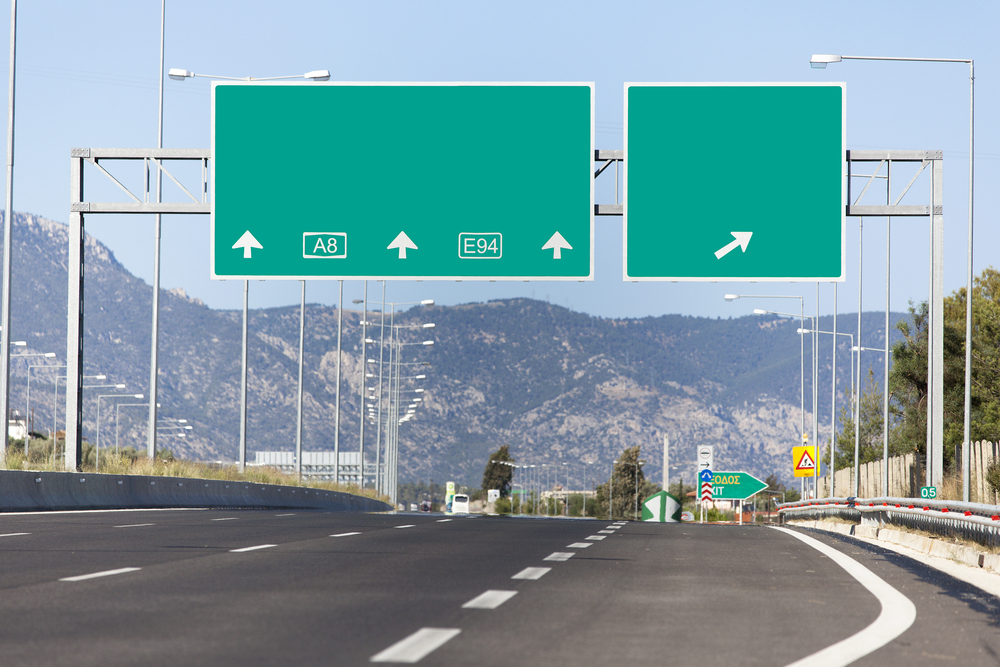
When driving on the road, it’s easy to take signs for granted. However, there are at least 10 to 25 road signs per mile in any given area, both on residential streets and highways. Road signs can be broken down into different categories, such as informational, prohibitive, and regulatory.
Regulatory signs are some of the most common, but what are they, and why are they valuable for cities and municipalities? Let’s break down the basics and examine the top five regulatory road signs.
What is a Regulatory Sign?
A regulatory road sign is designed to notify drivers of local driving laws and how they apply to the current road conditions. The primary purpose of regulatory signs is to ensure that all drivers comply with local laws for the safety and comfort of everyone.
Typically, regulatory signs are permanently installed in specific areas based on what information they convey to drivers. However, temporary regulatory signs may be necessary in areas under construction or renovation.
What are the 5 Most Common Regulatory Road Signs?
Since these signs are designed to regulate traffic, they are some of the most common sign options out there. The Manual on Uniform Traffic Control Devices (MUTCD) has a complete list of these signs. However, the ones drivers encounter the most often are:
Stop Sign
A stop sign is octagonal with a red background and white lettering. Stop signs notify drivers that they must stop before continuing forward. Typically, stop signs are placed at intersections to prevent collisions between drivers heading in different directions. Some intersections have stop signs for one road, giving drivers on the perpendicular road the right of way.
In other cases, the intersection may be a “four-way stop,” meaning all drivers must stop at the intersection and wait for others to pass, as necessary. According to driving laws, the person to the right of the stopped vehicle has the right of way.
Yield Sign
A yield sign is a downward-pointing equilateral triangle. Inside the shape is a thick red border encompassing a white interior. The word “yield” is written in red on a white background.
The purpose of a yield sign is to notify drivers that cars coming from the opposing street have the right of way. Typically, yield signs are placed where drivers must merge into existing traffic, such as coming off a freeway or highway.
When yield signs were introduced in 1954, they were yellow with black lettering. The switch to red and white signs happened in 1971, although some people mistakenly believe that yellow yield signs still exist.
Speed Limit Sign
Speed limit signs are posted in all areas, including residential streets and highways. This sign notifies drivers of the maximum speed allowed by law for that area. Generally, speed limits are 25 mph for residential areas, 55 mph for rural highways, and 65 or 70 mph for interstate freeways.
Some states may also have a minimum speed limit sign, which notifies drivers of the slowest safest speed they can travel. These signs are typically found on interstate freeways, although they’re not present in every state.
A speed limit sign is a white rectangle with a thin black border and black lettering. In the United States, the numbers posted are always in miles per hour.
No Turn Sign
Sometimes, it’s not safe or viable for a driver to make a turn. No turn signs can be directed left, right, or for U-turns. For example, a driver may be unable to turn right because the adjoining road is a one-way headed in the opposite direction. U-turns can also be dangerous in some intersections, particularly those with dedicated left-turn traffic.
No turn signs are white squares with thin black borders and a black arrow pointing in the direction drivers cannot go. A red circle with a diagonal slash covers the arrow, indicating to drivers that it’s illegal to turn that way. Some of these signs only have the arrow and the prohibition symbol, while others may say “no [direction] turn.”
One Way Sign
One-way streets are designed to improve the flow of traffic, particularly in densely populated areas or in cities with narrower streets. A one-way sign indicates the flow of traffic with an arrow.
There are two varieties of one-way signs. The first is a white rectangle with a thin black border and black lettering (similar to a speed limit sign). The second option is a horizontal sign with a black background, white arrow, and black lettering inside the arrow.
Other Regulatory Road Signs
Although the five signs listed above are the most commonly seen on roadways, there are quite a few different types of regulatory road signs. Here’s a rundown of other options necessary in urban or rural areas:
- Pedestrian Crossing – This sign notifies drivers that pedestrians may cross the street, so they should be extra vigilant and pay attention to pedestrians while driving.
- No Parking – Many cities use no parking signs to prevent drivers from blocking off access points or roadways. Parking fines are some of some cities’ most lucrative revenue sources, making these signs highly valuable.
- HOV Lane – Some cities will dedicate a lane for high-occupancy vehicles (HOV) to combat traffic congestion. Usually, this lane is restricted during peak traffic times, although some HOV lanes are always active, no matter the time of day.
- Do Not Enter – A Do Not Enter sign is usually reserved for private roads, access roads, or one-way streets moving in the opposite direction. This sign is a red circle with a white rectangle in the center and white lettering inside the circle.
Get Regulatory Road Signs from Worksafe Traffic Control Industries
With so many regulatory road signs needed for streets and freeways, cities must update and maintain these signs regularly. Fortunately, Worksafe Traffic Control Industries offers comprehensive sign-making services. We deliver fast turnaround times, and all our signs are MUTCD compliant. Order yours today!

